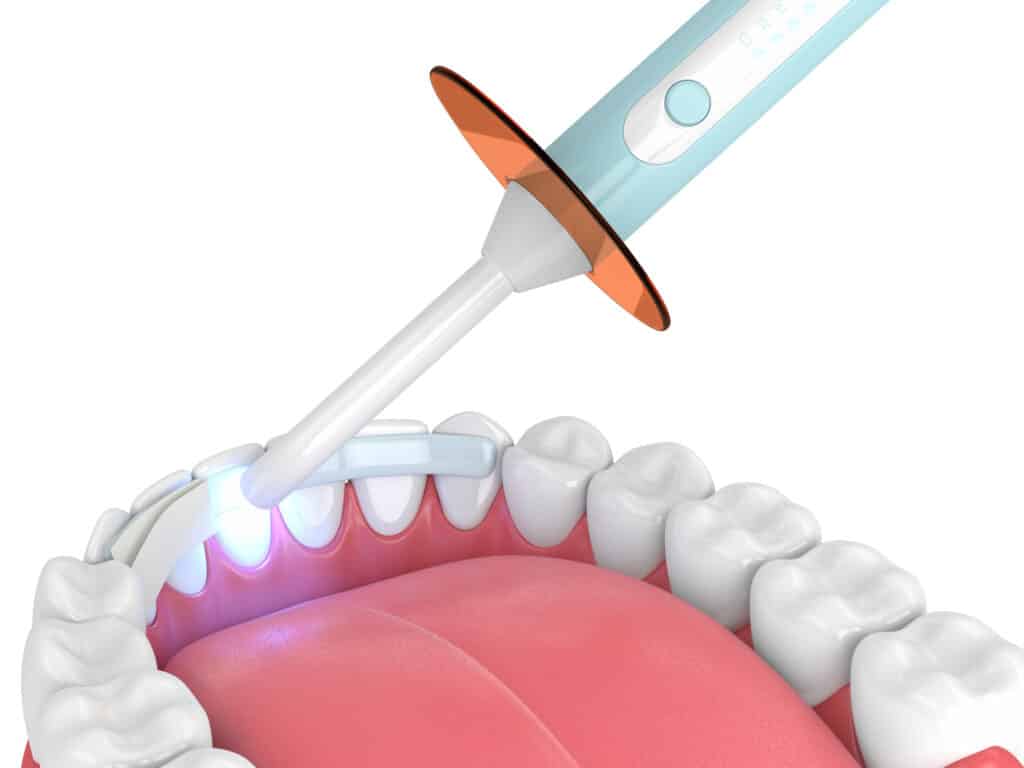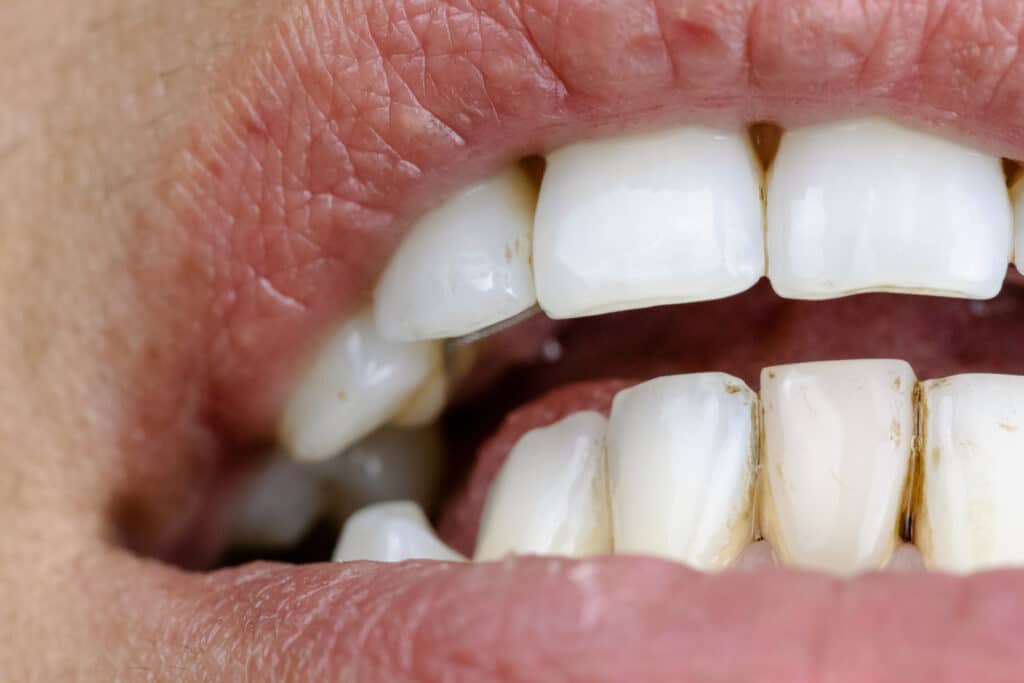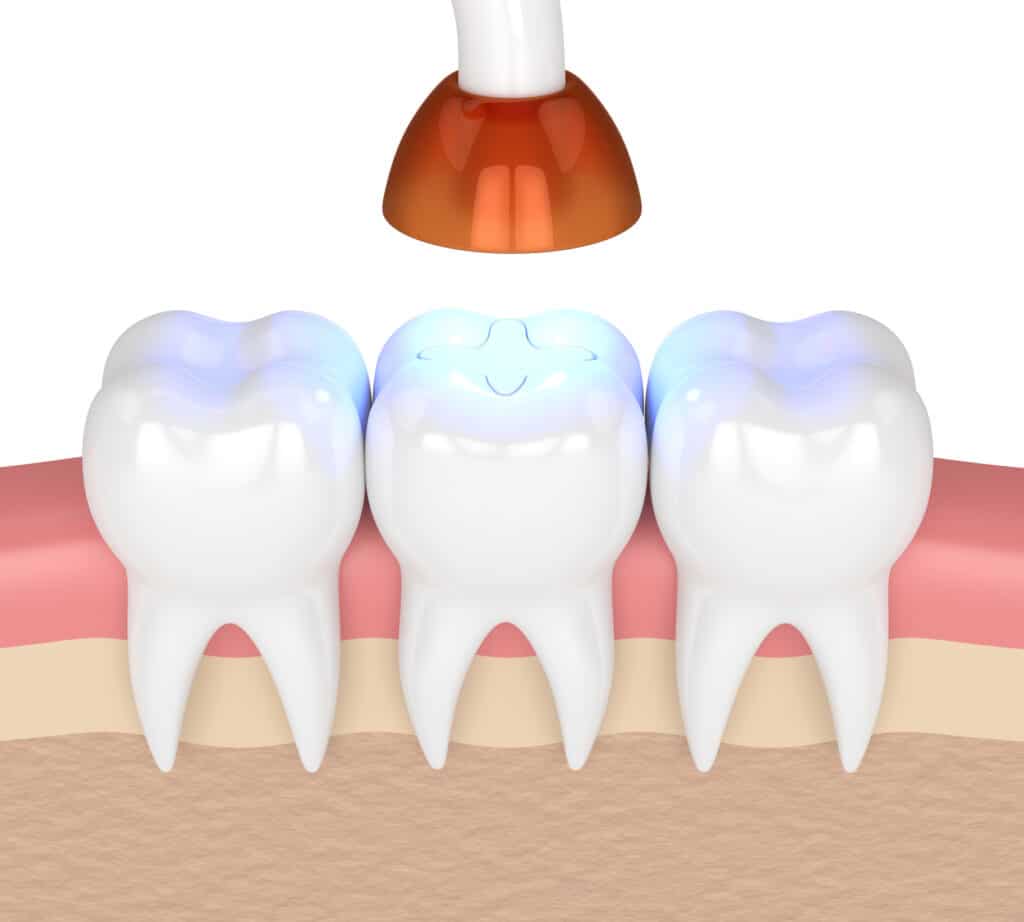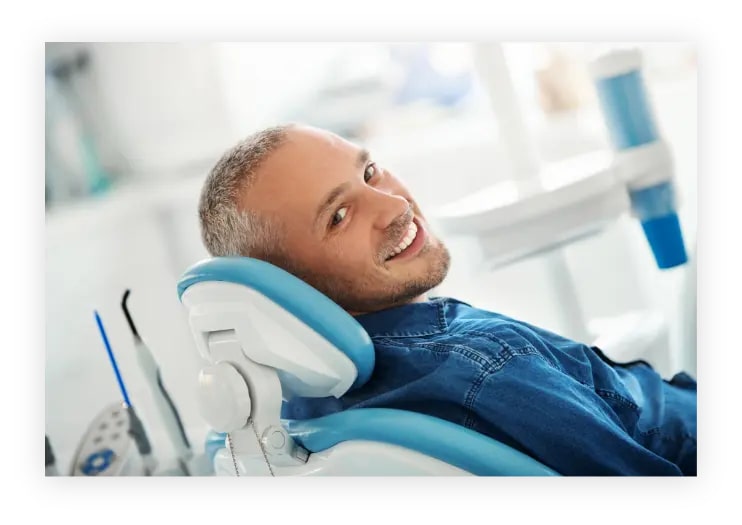Dental bonding is an effective cosmetic dental solution that can repair a wide range of minor issues with your teeth. Dr. Heather Fleschler provides this service at her office in Houston, Texas, serving patients in the River Oaks and West University areas. Using composite resin, she can reshape and repair teeth to restore a natural-looking smile.

What People Say About Us!
Dr. Fleschler and her staff are truly a pleasure to be around. They are all prompt and professional, and everyone seems genuinely happy to see you. Dr. Fleschleris refreshingly honest and does not make any unnecessary recommendations, She makes you feel like your ideal dental health is her ultimate goal. | am very picky about my healthcare professionals, but | feel that Dr. Fleschler and her team members are someone that I am more than comfortable referring friends and to.
Click here to read more reviews.
This page will provide an overview of the dental bonding procedure, but it cannot diagnose your condition or make recommendations about your unique situation. The best way to find out whether tooth bonding is the best option to address your needs is to speak with Dr. Fleschler in person. Please call 713-660-6500 today to schedule a consultation at our Houston cosmetic dentistry office.
What are the advantages and disadvantages of bonding?
There are pluses and minuses involved with bonding. Here are both sides:
Advantages
- Bonding is much cheaper than crowns or veneers.
- Bonding can be done in a single visit, usually requiring just an hour or so.
- The resin color is matched to your natural teeth very accurately.
- No anesthetic is needed.
- The procedure is completely non-invasive.
- Bonding doesn’t require removing healthy tooth material, as is necessary with crowns and veneers.
Disadvantages
- Chewing hard foods and grinding your teeth can make the bonding crack or chip.
- Composite resin doesn’t resist staining the way dental porcelain does, although it resists staining better than natural tooth enamel.
- Excessive bite force or trauma can cause the resin to detach.
- Bonding isn’t meant for large areas.
- Bonding doesn’t return strength to a damaged tooth, as a crown does.
- Bonding doesn’t respond to whitening.
Benefits Of Dental Bonding
There are many benefits to choosing dental bonding for your cosmetic dentistry needs. The most common include:
- Minimally invasive, conservative treatment option that removes less natural tooth structure than procedures such as dental crowns or porcelain veneers
- The shade of the bonding material can be matched to the color of your natural tooth for beautiful results that blend in seamlessly with your smile
- Requires only one visit to our Houston cosmetic dentistry office to complete the procedure
- One of the most affordable cosmetic dentistry options available
Am I A Candidate For Dental Bonding?
Dr. Fleschler typically recommends dental bonding in situations where you are seeking to correct minor cosmetic issues. The procedure is most effective in areas where minimal bite pressure is exerted. For more extensive oral health issues, alternative procedures may deliver more effective results.
Dental bonding is commonly used to:
- Fill small gaps between teeth
- Repair a chipped or cracked tooth
- Alter the shape of a tooth
- Improve the appearance of a discolored tooth that has been resistant to teeth whitening treatments
- Make your tooth appear longer
- Repair a decayed tooth
What kinds of problems can dental bonding address?
Dental bonding can be used to treat:
- Discolored teeth that don’t respond to whitening
- Minor chips and cracks
- Uneven teeth
- Crooked teeth
- Gaps between teeth

It’s important to note that bonding is aesthetic in nature; it doesn’t solve underlying tooth issues such as decay. In order for a tooth to receive any bonding, it must be healthy.
What’s the difference between dental bonding and applying porcelain veneers?
Both dental bonding and the application of porcelain veneers have the same goal — the cosmetic improvement of flaws with a tooth or a number of teeth — but they achieve this with completely different means.
Bonding involves Dr. Fleschler placing composite resin onto the exterior of a tooth. First, she lightly etches the tooth to create stronger adherence to the tooth enamel. Then she applies the resin in layers, curing it as she goes. The resin is applied as a paste and it can be shaped and contoured to match the tooth’s shape and position in the mouth. Bonding is different on every tooth, and it can be placed in a single appointment.
Porcelain veneers are thin shells of dental porcelain that are applied to the front surface of a tooth or to all of the visible teeth. To make room on the tooth for the veneers, Dr. Fleschler has to shave off a small amount (0.3 mm to 0.5 mm) of the tooth’s outer enamel. Veneers are custom made to fit the patient’s teeth and are fabricated at a dental lab. This means placing veneers takes two appointments. Once a tooth has a porcelain veneer, it will always have to be covered with a veneer. This is because of the enamel that is removed to make room for the veneer. That means when the veneers reach their lifespan they will need to be replaced by a new set.
Porcelain veneers last longer than dental bonding, but they are also more expensive.
Is dental bonding painful?
There isn’t any pain whatsoever with dental bonding. Dr. Fleschler lightly etches the tooth or teeth to receive bonding as the first step, and then she begins painting on the composite resin in layers. There isn’t any need for local anesthetic.
How can I prepare for my dental bonding session and how many sessions are required?
There isn’t any preparation necessary. One reason our patients from Houston and the surrounding areas love bonding for simple cosmetic improvements is that it can be done in a single appointment. Let’s say you just chipped the corner of a tooth when biting into an unforeseen item in a sandwich. You can make an appointment and Dr. Fleschler can make the tooth whole again in just a single appointment that takes just 30-60 minutes. How easy is that?
Having a tooth bonded with Dr. Fleschler is an easy, quick procedure. Most bonding applications take just 30 to 60 minutes. There isn’t any recovery; you can use your newly bonded teeth immediately.
How long does a bonding session take?
Dental Bonding Process
Your dental bonding procedure can be completed in under an hour. Dr. Fleschler applies a putty-like composite resin in layers to build up the tooth’s surface. She then skillfully sculpts the bonding material to the desired shape and uses a special light to harden the material, ensuring it adheres securely to your tooth.
You don’t have to live with a smile you don’t love or pay a fortune to feel confident again. Dental bonding might be the right cosmetic dentistry procedure to give you a brighter look.

Why Choose Heather F. Fleschler?
Dr. Heather F. Fleschler applies advanced training and years of practice when working with her patients. She is originally from Houston and values serving the community with her dental care. With a Fellowship from the Academy of General Dentistry and education from the Las Vegas Institute for Advanced Dental Studies, Dr. Fleschler stays current with developments in cosmetic and restorative dentistry.
Patients trust Dr. Fleschler for her thoughtful and skillful approach. Her expertise in cosmetic and neuromuscular dentistry allows her to provide natural-looking results. Whether addressing minor cosmetic enhancements or more comprehensive concerns, Dr. Fleschler will work with you to give you a smile you feel confident sharing.
How do I care for my teeth that received dental bonding?
Your bonded teeth require only normal good home hygiene practices, brushing for two minutes twice a day and flossing once daily. While the resin is non-porous and resistant to staining, it can stain over time. But, unlike natural tooth enamel, the composite resin in bonding cannot be whitened with teeth whitening treatments.
Is there recovery after having dental bonding?
These are completely painless procedures. Dr. Fleschler applies the composite resin to the exterior of your tooth or teeth. She cures it immediately. You can get right back to work or your normal activities as soon as you leave our beautiful offices on Westchester Street.
How long will my dental bonding last?
How long your bonding lasts depends in part on you. If you practice good hygiene and don’t chew ice and the like, your bonded teeth will continue to look great for up to a decade. When bonding starts to show its age, the old material can be removed and replaced with new composite resin.
How many appointments do I need to have dental bonding?
One reason our patients from across the Houston area love dental bonding for simple cosmetic improvements is that it can be done in a single appointment. Let’s say you just chipped the corner of a tooth when biting into an unforeseen item in a sandwich. Dr. Fleschler can make the tooth whole again in just a single appointment that takes just 30-60 minutes. How easy is that?

Are there any risks with dental bonding?
These are risk-free treatments. Composite resin is used for all of our fillings at Dr. Fleschler’s, as we are mercury- and metal-free practice. This is the same material used for our dental bonding. Bonding simply provides a cosmetic improvement of a tooth or teeth.
Are there limitations with what I eat with dental bonding?
Once Dr. Fleschler applies and cures the composite resin the bond to the tooth surface is quite strong. Bonding won’t come off a tooth. If you choose to bite into and gnaw on really hard foods, such as bones or to chew ice, it is possible to crack or chip a bonded tooth. This is rare, however, and the bonding can be repaired if it is damaged.
Can bonding be used to address all issues with my teeth?
No. These are purely cosmetic treatments of your teeth. Bonding covers imperfections with your teeth. Bonding is great for covering stains, chips, small cracks, and even small gaps. But these are just aesthetics. Your teeth must be inherently healthy before we can place any bonding resin on them.
If you have dental problems such as tooth decay, a deep crack, gum disease, and other issues, those need to be addressed first before you could have dental bonding.
Will I need bonding done again in the future?
Dental bonding is not like a dental implant, which will likely last the rest of the patient’s life. Composite resin creates a beautiful result with bonding. Dr. Fleschler matches the color of the resin used to your natural tooth enamel, so it blends in seamlessly with your other teeth. But resin begins to show its age in about 10 years or so.
When it feels like your bonded teeth aren’t looking as good any longer, we can remove the old composite resin and apply new bonding to give you another decade of a great cosmetic improvement in a tooth or teeth.
Can dental bonding be used to repair damage from teeth grinding (bruxism)?
Dental bonding can repair minor chips or cracks caused by teeth grinding, but it may not last as long if grinding continues. The resin used in bonding can wear down or chip under repeated pressure from grinding. To protect your bonded teeth from bruxism, we may advise you to wear a custom nightguard. For more extensive damage, crowns or other restorative options may be more durable.
How does the bonding process affect my tooth’s health?
Dental bonding preserves most of the natural tooth structure because it doesn’t require significant enamel removal. This makes it a conservative option for improving your tooth’s appearance. However, it’s important to avoid habits like nail-biting or chewing on pens. With proper care, bonding can maintain your tooth’s appearance without causing any long-term harm.
Are there other treatments if I’m not a candidate for dental bonding?
Patients who aren’t suitable candidates for dental bonding may consider porcelain veneers, crowns, or orthodontics. Veneers can address larger cosmetic concerns and last longer, while crowns are better for strengthening damaged teeth. If alignment issues are the root cause, orthodontic treatments like clear aligners may be recommended. A consultation can help determine the best treatment based on individual needs.
Will insurance cover dental bonding treatment?
Whether dental bonding is covered by insurance depends on the purpose of the treatment. If bonding is done to repair damage caused by an injury, decay, or another medically necessary issue, it may be partially covered. However, if the bonding is for purely cosmetic reasons, such as closing a gap or improving the shape of a tooth, insurance typically will not cover it. We suggest checking with your provider to understand your coverage and any out-of-pocket costs. You can also visit our financing page to see your payment options.
Schedule Your Consultation Today
If you're interested in learning more about dental bonding please contact us for a consultation at 713-660-6500 or fill out our contact us form. We will discuss your needs and concerns, and determine your best course of action.


